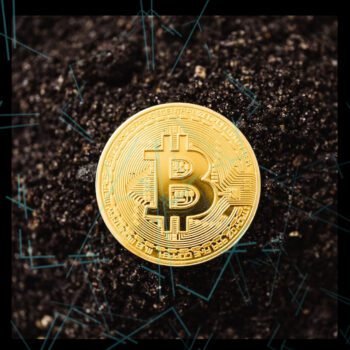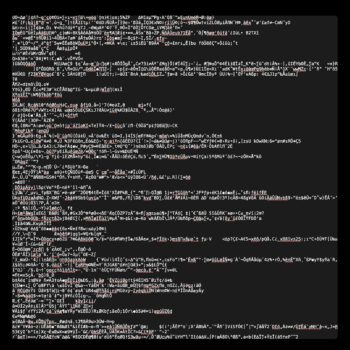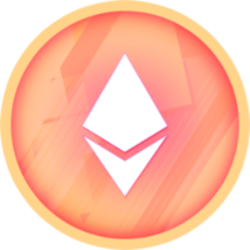|
thisCrowd - Audio Read
Getting your Trinity Audio player ready...
|
XRP, it’s not merely an acronym; it’s a cryptocurrency with a mission as unique as its name. XRP stands as the native token of Ripple Labs, and its purpose extends far beyond the realm of ordinary digital coins. In this narrative, we’ll unveil the captivating story of XRP, from its inception to its current standing in the crypto universe.
Genesis and Purpose of XRP
Picture it: 2011, a time when cryptocurrency was merely a baby in the grand scheme of things. It’s in this digital infancy that the dynamic duo, Jed McCaleb and Chris Larsen, brought XRP into the world. XRP wasn’t just another cryptocurrency; it was designed to be the superhero of global financial transfers and currency exchange. XRP isn’t content with just that role; it’s also a safe-haven for value and a heart-pounding rollercoaster for thrill-seeking investors looking to ride the waves of price swings. This is no ordinary digital currency; it’s a multifaceted gem… some at least believe.
A Brief Ripple in Time
To truly grasp the journey of XRP, we need to rewind the clock to the early 2000s, a period predating the mainstream fame of Bitcoin. Back then, there was Ripplepay, a brainchild of software developer Ryan Fugger in 2004. Ripplepay set out to simplify global transactions, but it diverged from the blockchain path; it was centralized.
Jump ahead to 2012, a year when Chris Larsen and Jed McCaleb joined forces to establish Ripple, aligning their vision with that of Bitcoin’s enigmatic creator, Satoshi Nakamoto. Their shared objective: to forge a swifter and more secure avenue for global transactions. Yet, it’s worth noting that Ripplepay’s efficiency was accompanied by a dose of centralization.
In the year 2011, an era when the cryptocurrency realm was in its nascent stages, Jed McCaleb and Chris Larsen embarked on a mission to introduce XRP. This digital currency was meticulously crafted to disrupt the conventional landscape of global financial transfers and currency exchange.
The journey wasn’t without its share of identity shifts. From 2012 to 2015, Ripple underwent several rebranding phases, transitioning from Newcoin to OpenCoin before ultimately adopting the name we know today, Ripple.
XRP vs. Ripple: The Distinction
Although XRP and Ripple are often used interchangeably, it’s vital to distinguish between the two. XRP stands as an open-source digital asset, while Ripple functions as a technology company. Thanks to its speed, efficiency, and eco-friendly attributes, XRP became Ripple’s go-to tool for making financial aspirations a reality.
The Inner Workings of XRP
XRP operates on its decentralized, open-source blockchain, known as the XRP ledger (XRPL). Transactions are orchestrated by the Ripple transaction protocol (RTXP). Unlike most cryptocurrencies, XRP doesn’t emerge through mining; it’s pre-mined, boasting a maximum token supply of 100 billion. Here’s how the tokens were distributed:
- Ripple secured a substantial 80 billion tokens, with 55 billion locked away in an escrow account for stability.
- The remaining 20 billion XRP found their way into the hands of Ripple’s co-founders and core team.
- The remaining XRP trickle into existence at a rate of less than 1 billion per month, adhering to the original schedule of 55 months.
XRP was conceived with a straightforward yet potent vision: the creation of a peer-to-peer trust network. Ripple touts XRP as a swifter, more economical, and environmentally friendly digital asset capable of processing transactions within seconds while consuming less energy compared to some of its crypto counterparts. Roughly 53% of XRP tokens are currently in circulation.
Navigating the Legal Landscape
In 2015, Ripple Labs and XRP faced stormy legal waters when fined $700,000 by FinCEN for unauthorized XRP sales and lacking an anti-money laundering program. They swiftly set sail to compliance by implementing the AML program.
The real courtroom spectacle kicked off in December 2020 when Brad Garlinghouse, Ripple’s top dog, spilled the beans about the SEC’s plans to take them to court. The SEC didn’t hold back and launched a lawsuit against Ripple, firing shots at XRP, claiming it was a renegade unregistered security. This legal showdown was all about the classic “Is it a security or just another cryptocurrency?” conundrum. Fast forward to July 13, 2023, and the grand finale arrived, with the court’s gavel banging down. The verdict? Ripple got slapped with a securities law violation for offering unregistered goodies to institutional investors but got a pass for selling XRP on the open market.
The Latest Legal Twist
A federal judge has given the SEC the green light to cook up a motion that, if it gets the nod, would hand the SEC a golden ticket to challenge a ruling that basically gave XRP transactions on exchanges a thumbs-up in the eyes of securities laws. Judge Analisa Torres, the conductor of the U.S. District Court for the Southern District of New York, has set a deadline for the SEC to drop this motion bomb by Friday. Meanwhile, Ripple gets a bit more time to prepare its counterpunch, with a deadline stretching until the 1st of September, and then the SEC can volley its response by the 8th of September. If the SEC triumphs in this legal showdown, it can then turn to the court and say, “We want to appeal this thing for real!” So, folks, fasten your seatbelts; this rollercoaster is far from reaching the end of the ride!
Insights from the Experts
Now, let’s listen to what the crypto experts have to say, but with a touch of whimsy. ConsenSys Senior Counsel and Director of Global Regulatory Matters Bill Hughes suggests that the SEC faces a formidable uphill climb. The legal standard for an appeal is akin to tightrope walking, and the SEC’s past statements might not be the most graceful dance moves. Hughes points out that the SEC had previously implied that the Ripple case wouldn’t significantly impact other crypto securities lawsuits.
Dave Rodman, the maestro behind the Rodman Law Group, adds that the appeal won’t hit the pause button on the rest of the case. However, if the SEC manages to secure approval from both Judge Torres and the Second Circuit Court of Appeals for the appeal, they might call a timeout on all proceedings until the appeal reaches its grand finale.
The Grand Conclusion
In conclusion, XRP’s journey is a captivating narrative, characterized by innovation, controversy, and resilience. From its inception as a solution to global payment challenges to its courtroom battles with the SEC, XRP has remained a formidable presence in the cryptocurrency landscape. Its distinctive features, including rapid and cost-effective transactions, set it apart from the crowd.
As the legal drama continues to unfold, the crypto community watches with bated breath, recognizing that the outcome could reverberate far beyond the world of XRP. Whether you view XRP as a promising opportunity or a contentious asset, one thing is undeniable: this crypto saga is far from reaching its final chapter, and the entire world eagerly anticipates the next thrilling twist in this riveting storyline.















































